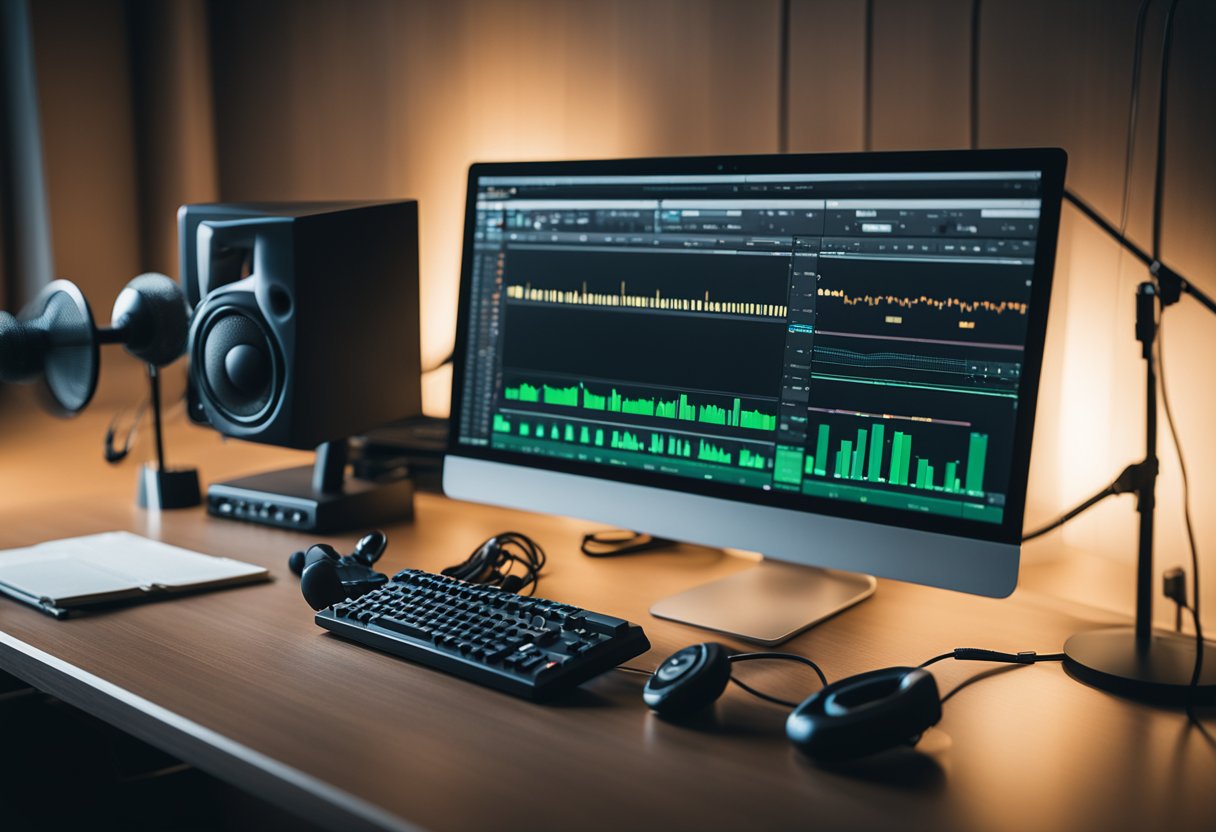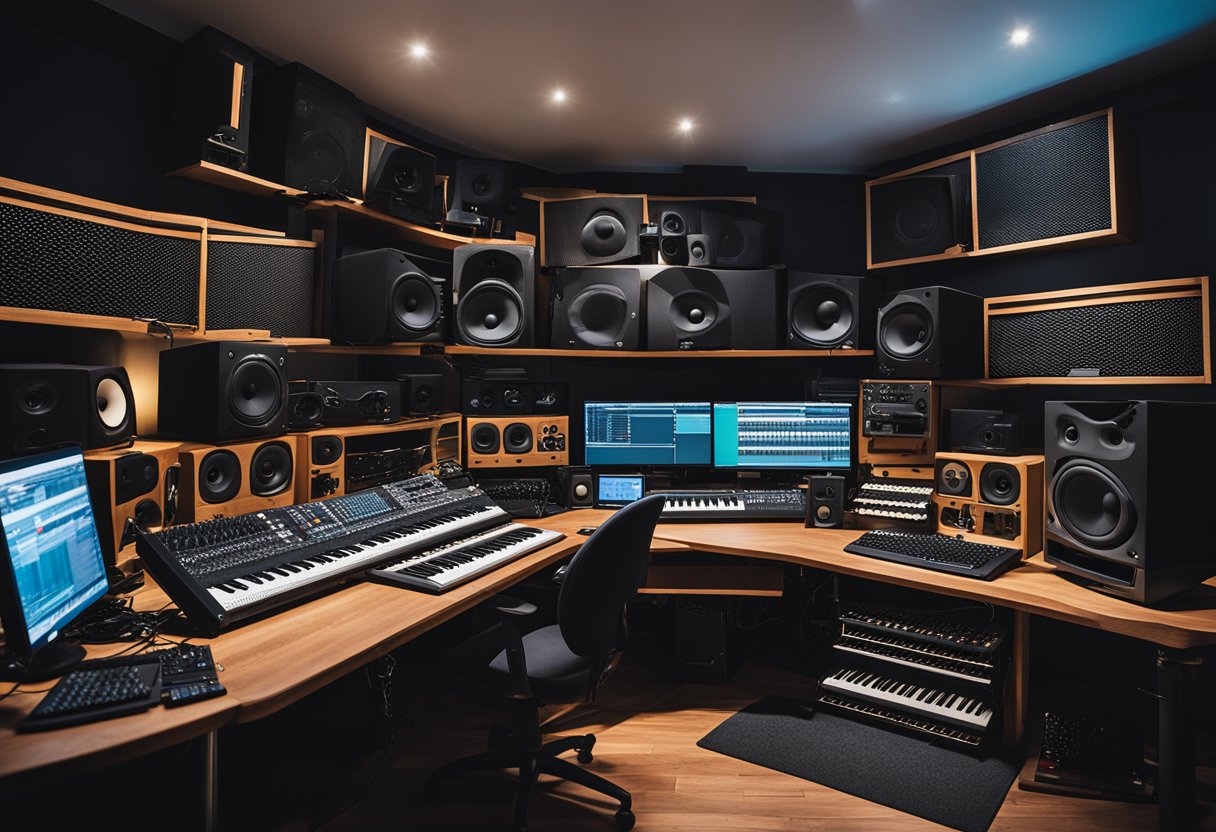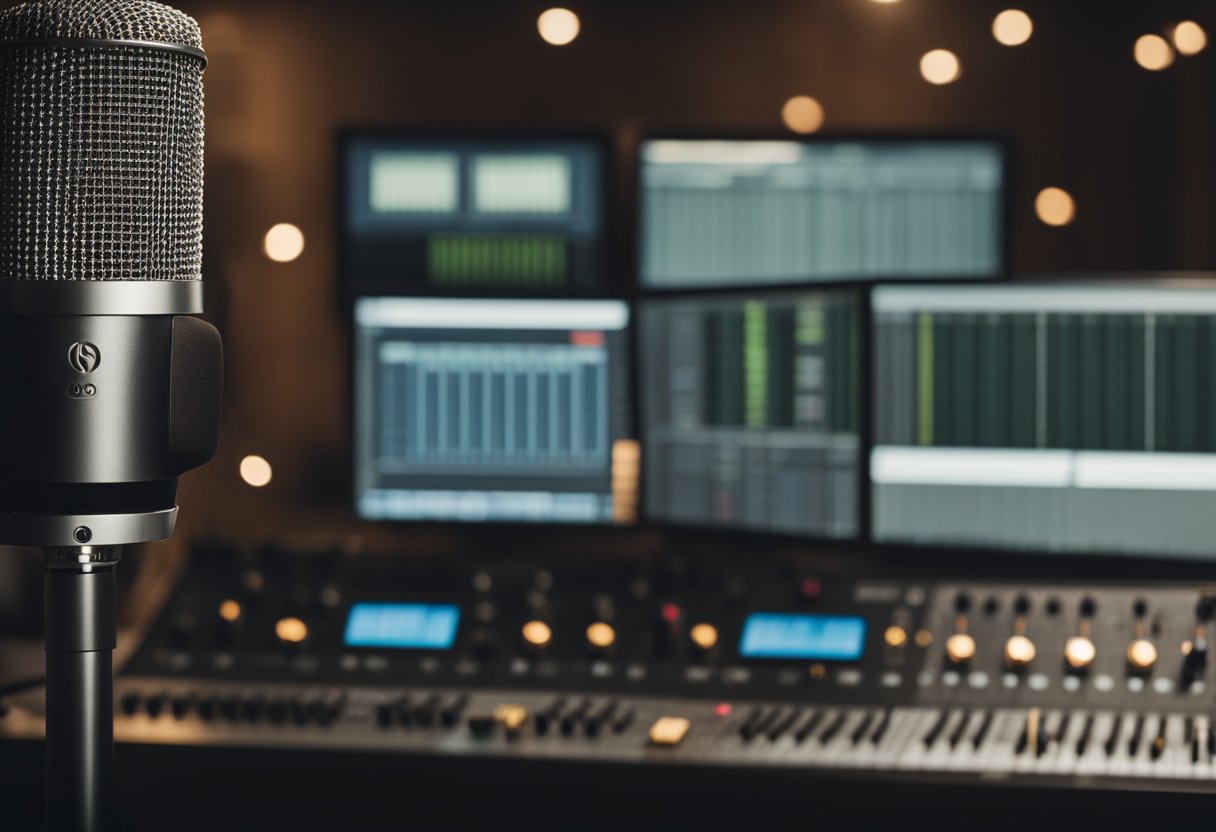Music production software has revolutionized the way music is created and produced. With the advent of digital audio workstations (DAWs), anyone with a computer and a little bit of knowledge can create professional-quality music. However, learning how to use these software programs can be overwhelming, especially for beginners. That’s where music production software training comes in.
Music production software training is a specialized form of education that focuses on teaching individuals how to use DAWs and other music production software programs. This training covers everything from setting up your studio to recording and editing audio, mixing and mastering, and advanced production techniques. The goal of this training is to provide individuals with the skills and knowledge they need to produce high-quality music using software.
Whether you’re a beginner or an experienced musician, music production software training can help take your music to the next level. With the right training, you can learn how to use software-specific tools and workflows to create professional-sounding music. Additionally, music production software training can help answer frequently asked questions and provide solutions to common problems that arise during the production process.
Key Takeaways
- Music production software training teaches individuals how to use DAWs and other music production software programs.
- Training covers everything from setting up your studio to advanced production techniques.
- Music production software training can help individuals produce high-quality music and provide solutions to common problems.
Overview of Music Production Software

Music production software has revolutionized the music industry by providing musicians with a powerful set of tools to create, record, and mix their music. There are different types of music production software available in the market, each with its own unique set of features and capabilities. In this section, we will provide an overview of the most common types of music production software.
Digital Audio Workstations (DAWs)
Digital Audio Workstations (DAWs) are the backbone of music production software. They are software applications that enable musicians to record, edit, and mix audio and MIDI tracks. DAWs come with a range of features, including audio and MIDI recording, editing, mixing, and mastering tools. Some popular DAWs include Ableton Live, Logic Pro X, and Pro Tools.
Virtual Instruments and Plugins
Virtual instruments and plugins are software-based instruments that can be used within a DAW to create different sounds. They can emulate traditional instruments like guitars, pianos, and drums, or create new sounds that are impossible to achieve with traditional instruments. Plugins are used to add effects to audio tracks, such as reverb, delay, and compression. Some popular plugins include Waves, FabFilter, and iZotope.
Audio Processing and Effects
Audio processing and effects are used to enhance the sound of audio tracks. They include tools for equalization, compression, distortion, and modulation. Equalization is used to adjust the frequency balance of an audio track, while compression is used to reduce the dynamic range of an audio track. Distortion is used to add warmth and character to an audio track, while modulation is used to create effects like chorus, flanger, and phaser. Some popular audio processing and effects plugins include Waves, FabFilter, and iZotope.
In summary, music production software is an essential tool for musicians and producers. It provides them with a powerful set of tools to create, record, and mix their music. DAWs, virtual instruments and plugins, and audio processing and effects are the three main types of music production software.
Setting Up Your Studio

Hardware Requirements
Before starting with the music production software training, it is essential to ensure that your computer meets the hardware requirements needed to run the software smoothly. The minimum requirements for the software are usually listed on the manufacturer’s website. However, it is always advisable to go for a higher configuration to avoid any performance issues.
Software Installation and Registration
Once you have ensured that your computer meets the hardware requirements, the next step is to install the music production software. Follow the instructions provided by the manufacturer to install the software correctly. After installation, register the software with the manufacturer to receive updates and support.
Audio Interface Configuration
An audio interface is essential for recording and monitoring audio in your studio. Connect the audio interface to your computer and configure it according to the manufacturer’s instructions. Ensure that the audio interface is selected as the default input and output device in the music production software’s preferences.
In conclusion, setting up your studio correctly is crucial to ensure that you get the best out of your music production software. By following the hardware requirements, software installation and registration, and audio interface configuration, you can start your music production journey with confidence.
Recording and Editing Audio

Track Creation
One of the first steps in recording and editing audio is creating tracks. This involves selecting the appropriate instruments and sounds, and setting up the recording environment. Music production software offers a variety of tools for creating tracks, including virtual instruments, samplers, and synthesizers. These tools allow users to create unique sounds and manipulate them to fit their desired style.
MIDI Sequencing
MIDI sequencing is another essential aspect of music production software training. MIDI (Musical Instrument Digital Interface) is a protocol that allows computers to communicate with musical instruments and devices. MIDI sequencing involves recording, editing, and playing back MIDI data. This allows users to create complex arrangements and manipulate individual notes and sounds.
Audio Recording Techniques
Recording audio requires a good understanding of microphone placement, gain staging, and signal flow. Music production software provides a variety of tools for recording audio, including EQ, compression, and reverb. These tools allow users to shape the sound of their recordings and create professional-quality mixes.
Editing and Comping Tracks
Editing and comping tracks involves selecting the best takes and arranging them into a cohesive performance. Music production software provides a variety of tools for editing and comping tracks, including time stretching, pitch correction, and automation. These tools allow users to fine-tune their recordings and create polished final products.
In conclusion, recording and editing audio is an essential part of music production software training. By mastering the tools and techniques involved in track creation, MIDI sequencing, audio recording, and track editing, users can create professional-quality recordings and achieve their desired sound.
Mixing and Mastering

Mixing Fundamentals
Mixing is the process of blending individual audio tracks together to create a cohesive and balanced final product. It involves adjusting the levels, panning, and equalization of each track to create a well-balanced sound. The goal of mixing is to ensure that each instrument and sound in the mix is heard clearly and contributes to the overall sound of the song.
Use of Equalization
Equalization, or EQ, is a powerful tool used in mixing to shape the tonal balance of a track. It allows the engineer to boost or cut certain frequencies to enhance or reduce the presence of specific instruments in the mix. EQ can be used to remove unwanted frequencies, such as background noise or hum, and to add clarity to individual tracks.
Dynamic Range Processing
Dynamic range processing is the manipulation of the volume levels of a track to create a balanced and consistent sound. It involves the use of compressors, limiters, and other tools to control the dynamic range of a track. This ensures that the softer parts of a song are audible and the louder parts are not overpowering.
Audio Effects and Automation
Audio effects, such as reverb, delay, and chorus, can be used to add depth and character to a mix. Automation allows the engineer to adjust the levels, panning, and effects of individual tracks over time. This can be used to create dynamic changes in the mix and to highlight specific parts of a song.
Mastering Basics
Mastering is the final step in the music production process. It involves balancing the levels of all the tracks in the mix, applying EQ and compression to the entire mix, and preparing the final product for distribution. The goal of mastering is to create a consistent and polished sound that is ready for release.
Music Production Workflows

Music production workflows are the series of steps and processes that music producers follow to create and complete a music project. These workflows vary depending on the music production software being used, the type of music being produced, and the individual preferences of the producer.
Template Creation
Creating templates is an essential part of music production workflows. Templates are pre-configured project files that contain all the necessary elements for a specific type of music production. By creating templates, producers can save time and streamline their workflow by avoiding repetitive tasks. For example, a template for a hip-hop beat might include pre-loaded drum samples, effects, and EQ settings that are commonly used in that genre.
Project Management
Project management is another critical aspect of music production workflows. Producers need to keep track of various elements of their projects, including recording sessions, mixing, mastering, and deadlines. Many music production software packages include project management features that allow producers to track their progress, set deadlines, and manage their workload effectively.
Collaboration and Sharing
Collaboration and sharing are also essential components of music production workflows. Producers often work with other musicians, vocalists, and engineers to create their music. Music production software packages allow producers to collaborate with others in real-time, sharing project files and making changes together. This feature is especially useful for remote collaborations, where producers may be located in different parts of the world.
Overall, music production workflows are critical to creating high-quality music efficiently. By using templates, managing projects effectively, and collaborating with others, producers can create music that is both innovative and professional.
Advanced Techniques

Sound Design
Advanced sound design techniques are an essential part of music production. With the right software, producers can create unique sounds that set their tracks apart from the rest. Some of the advanced sound design techniques include using effects such as reverb, delay, and distortion to manipulate sounds. Producers can also use EQ and compression to shape the sound and make it fit better in the mix.
Sampling and Resampling
Sampling and resampling are powerful techniques that can help producers create new sounds from existing samples. With sampling, producers can take a small section of a sound and use it as a building block for a new track. Resampling involves taking a sample and processing it further to create a new sound. This technique can be used to add depth and complexity to a track.
Synthesis and Modulation
Synthesis and modulation are advanced techniques that can be used to create complex sounds and textures. With synthesis, producers can create sounds from scratch using oscillators, filters, and envelopes. Modulation involves using one parameter to control another, creating dynamic and evolving sounds. These techniques can be used to create everything from lush pads to aggressive basslines.
In conclusion, advanced techniques in music production software can take a producer’s tracks to the next level. From sound design to sampling and synthesis, these techniques allow producers to create unique sounds that stand out from the crowd. With the right training and practice, producers can master these techniques and take their music production skills to new heights.
Software-Specific Training

When it comes to music production, having a good understanding of the software you’re using is crucial. Software-specific training can help you become familiar with the ins and outs of your digital audio workstation (DAW) and take your productions to the next level.
Popular DAW Tutorials
There are a variety of DAWs available on the market, and each one has its own unique features and workflow. Many software companies offer tutorials and resources to help users get the most out of their products.
For example, Ableton Live offers an extensive library of tutorials on their website, covering everything from basic concepts to advanced techniques. Pro Tools offers a similar resource with their “Pro Tools Basics” series, which covers the fundamentals of the software.
Additionally, there are many third-party resources available, such as online courses and YouTube tutorials, that can provide in-depth training on specific aspects of a DAW.
Genre-Specific Production Tips
Different genres of music often require different production techniques. Software-specific training can help producers learn how to achieve the desired sound for their chosen genre.
For example, if a producer is working on a hip-hop track, they may want to learn how to create a punchy kick and snare, or how to use samples effectively. Alternatively, if a producer is working on a pop track, they may want to learn how to create catchy melodies and vocal processing techniques.
Many software-specific training resources offer genre-specific production tips and techniques. These can be a valuable resource for producers looking to improve their skills and create professional-sounding tracks.
Frequently Asked Questions

What are the best free online courses for learning music production?
There are several free online courses available for learning music production. Some of the popular ones include Coursera, Udemy, and Skillshare. These courses offer comprehensive training on different aspects of music production, including sound design, mixing, and mastering.
How can I find music production software training in my area?
To find music production software training in your area, you can search for local music schools or studios that offer training programs. You can also check online forums and social media groups for recommendations from other music producers.
What are the essential skills I need to learn as a beginner in music production?
As a beginner in music production, it is essential to learn the basics of music theory, sound design, mixing, and mastering. It is also crucial to have a good understanding of different music production software and hardware.
Are there any online music production courses that offer certificates upon completion?
Yes, several online music production courses offer certificates upon completion. These certificates can be useful in demonstrating your skills and knowledge to potential employers or clients. Some of the popular courses that offer certificates include Berklee Online, Point Blank Music School, and SAE Institute.
What training do professional music producers recommend for newcomers?
Professional music producers recommend that newcomers start by learning the basics of music theory, sound design, mixing, and mastering. They also suggest experimenting with different music production software and hardware to find the tools that work best for their style of music.
How can I effectively self-learn music production techniques and software?
To effectively self-learn music production techniques and software, it is essential to have a structured approach. You can start by setting specific goals and objectives and breaking down the learning process into manageable chunks. It is also crucial to practice regularly and seek feedback from other music producers to improve your skills.



